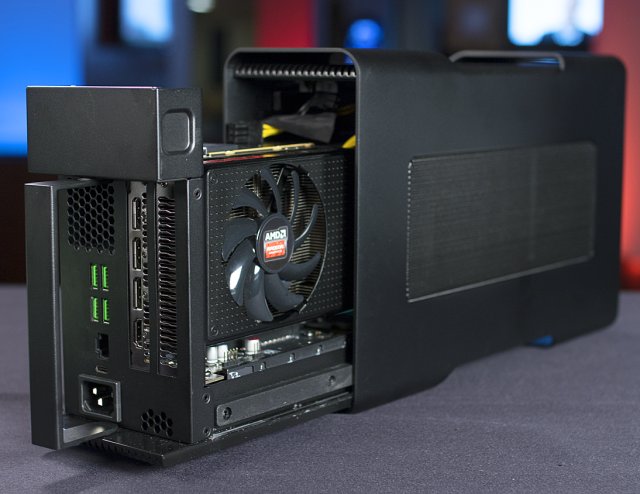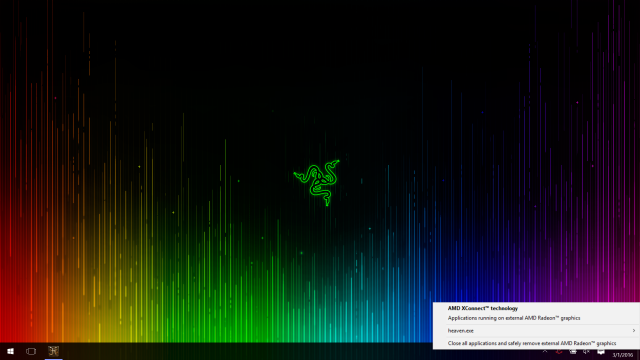
AMD has introduced XConnect, a form of driver-level support for external graphics cards, as part of its latest Radeon 16.3 driver. XConnect allows users to add and remove a Thunderbolt 3 external graphics device (eGFX) such as the Razer Core, without needing to restart the PC, as well as switch between discrete and integrated graphics on-the-fly.
The XConnect driver can also detect what applications are running on the external GPU, giving users the option to close them individually, or shut them all down at once from a pop-up menu in the system tray. Even if users forget to close down applications before removing the external GPU, AMD claims that the system will remain functional after a "surprise removal."
The first device to use XConnect will be the Razer Blade Stealth and Razer Core. AMD promises that its XConnect driver will be compatible with other systems and external GPU devices, provided they meet a few criteria. Devices must be running Windows 10 build 10586 or later and Thunderbolt firmware v.16 or higher; feature a Thunderbolt 3 port and 40Gbps Thunderbolt 3 cable; and pass Thunderbolt certification. Most importantly, the systems must have BIOS ACPI extensions for Thunderbolt eGFX.
The latter means that the few systems that have shipped with Thunderbolt 3 might not necessarily be compatible with eGFX devices like the Razer Core. However, AMD says it is possible to add those extensions in at a later date via a BIOS update, provided the system meets the other criteria.

While AMD's XConnect driver should make using an external GPU more reliable, there are still a few limitations to be aware of. For starters, the Thunderbolt 3 connection only provides four PCIe 3.0 lanes, which is less than the 16 lanes typically used in a desktop PC. While the Razer Core is one of the better-looking eGFX enclosures—the Asus one screams l33t gamer—it's still rather large, incorporating a full 500W ATX power supply as well enough room for graphics cards up to 12.2 inches/310mm long.
The graphics cards compatible with XConnect are limited to high-end offerings too, with the minimum being an AMD R9 280. However future graphics cards from the company, including the upcoming Polaris-based cards, will work with XConnect.
While it's likely to be a while before BIOS support for external GPUs becomes widespread, that there's support baked into a graphics driver does at least make a future where everyone docks their super-sleek ultrabooks into a high-end gaming setup at home closer to reality. The question is: will Nvidia join the eGFX party too?
reader comments
67